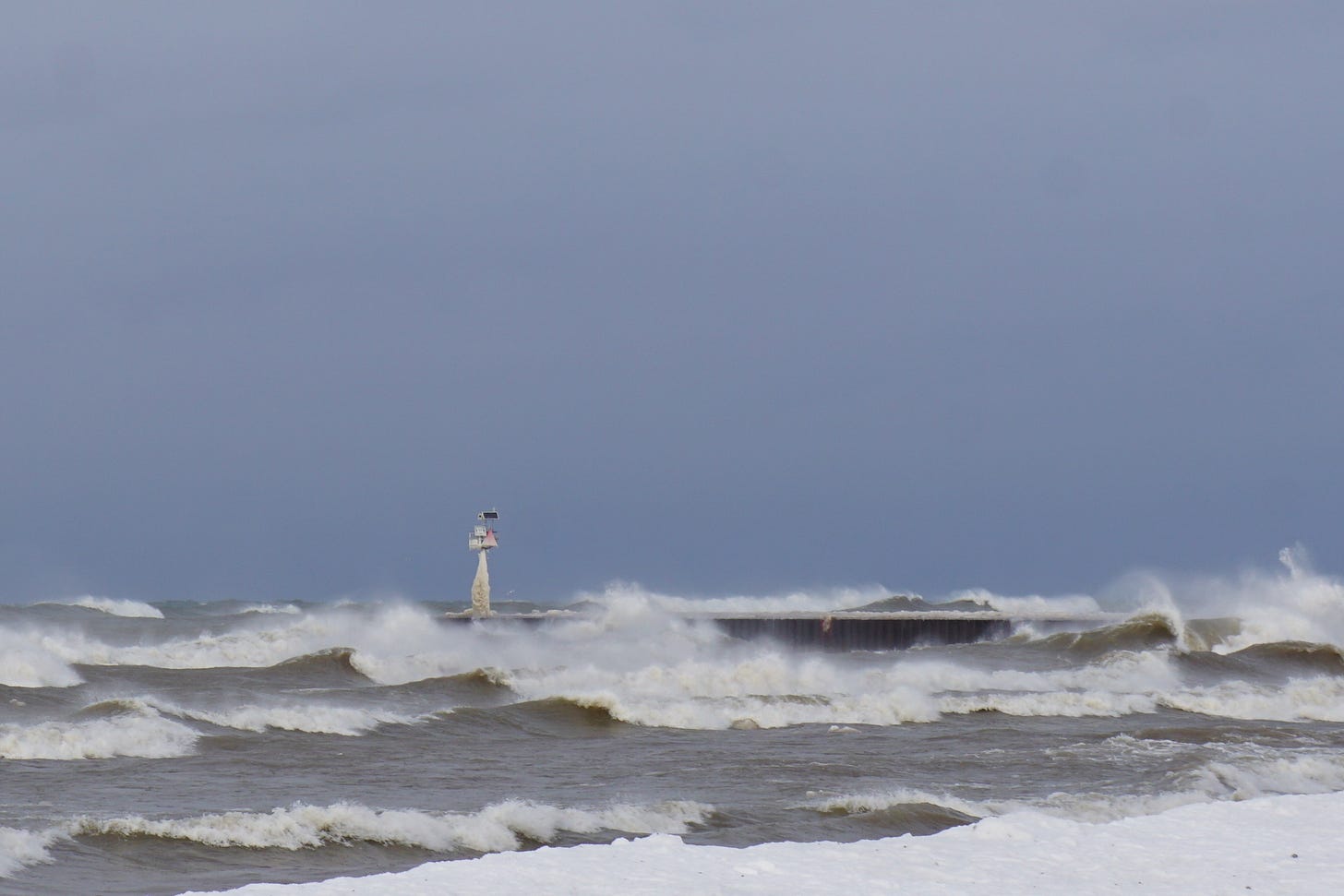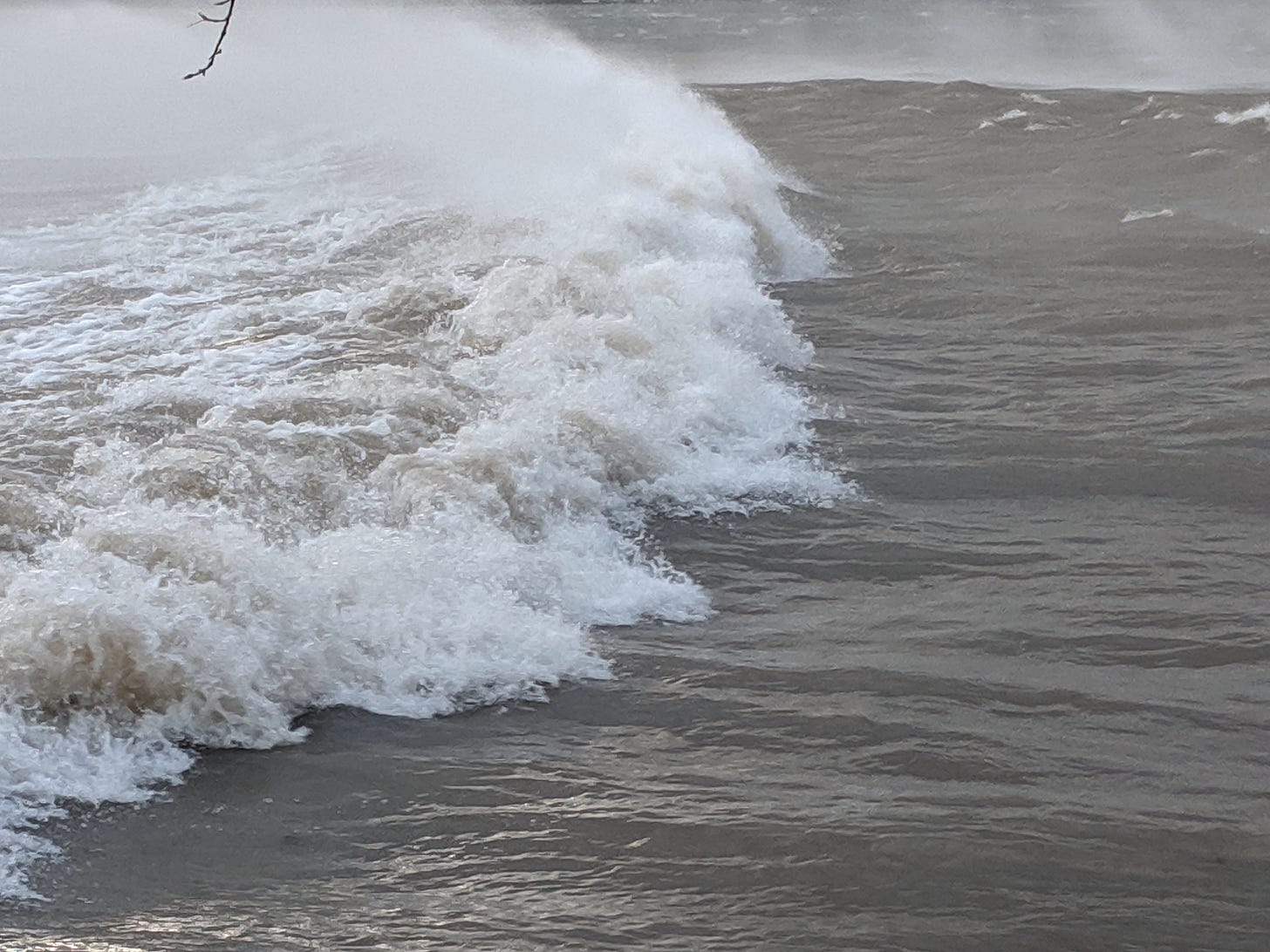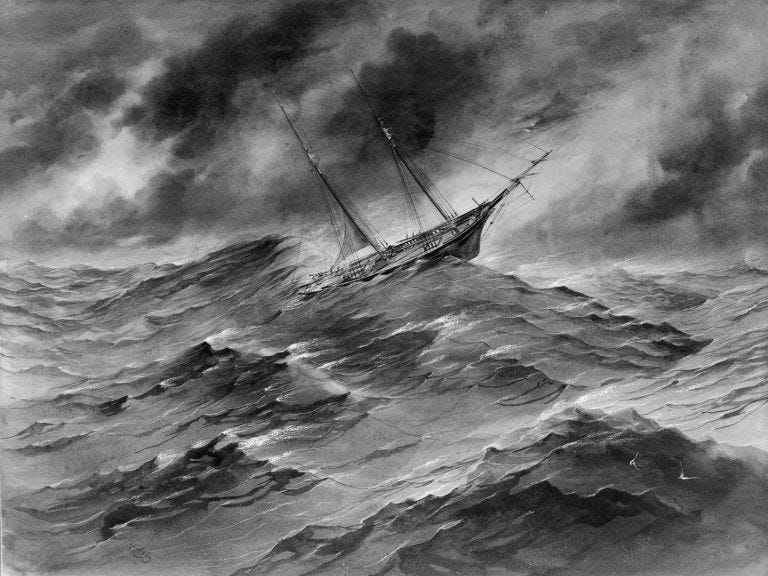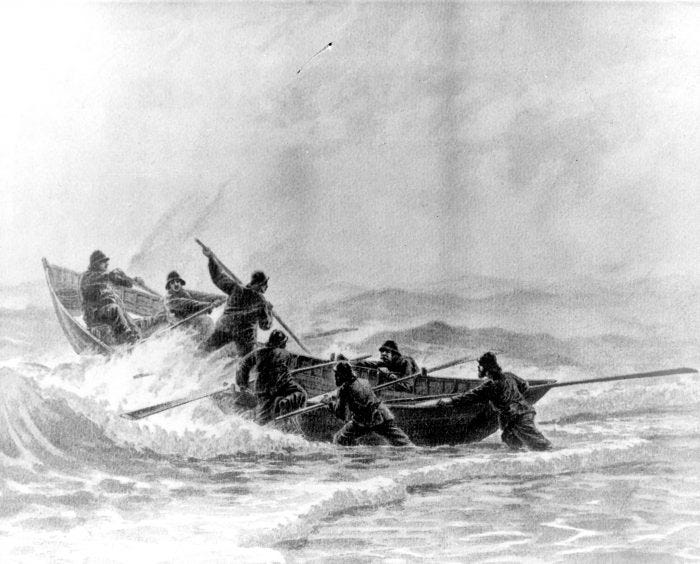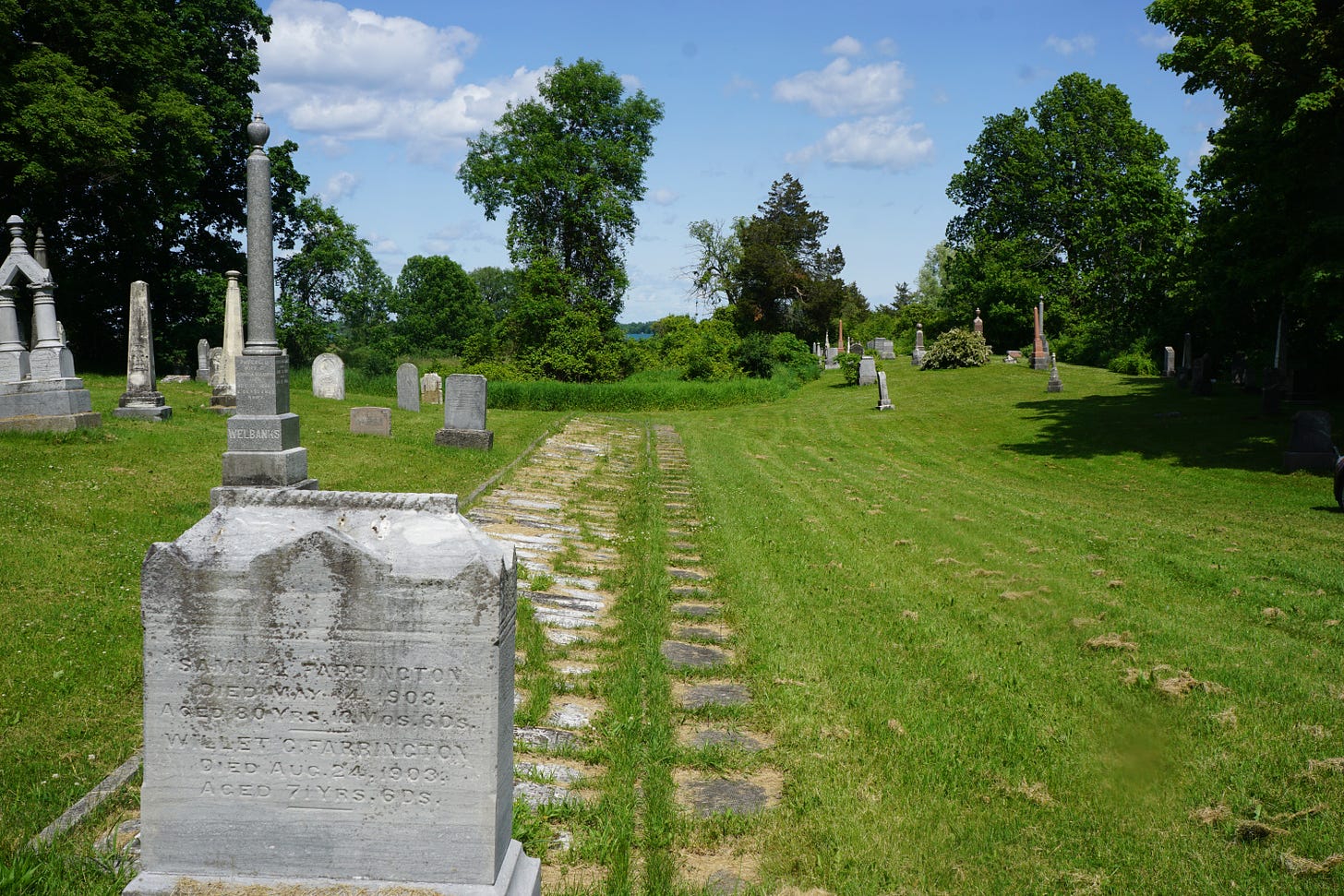Winter Gales on the Lake
Shipwrecks are not my favorite thing to write about. But ‘tis the season of storms and gales on the lake, and watching the big rollers run ashore brings sobering thoughts. It’s easy to get discouraged these short dark days, but maybe looking back at “the good old days” is a reminder that on the whole things have gotten easier for many North Americans than they were in the 1800s. Then parts of Lake Ontario literally were a graveyard. The later days of commercial sail when ships were getting old and tired and profit margins were meager saw plenty of tragedy. The climactic November gale in my novel Widow Maker really did happen, and it sank a half dozen ships.
on November 1 2019, winds rolled up 22 foot waves on Lake Ontario-this one was at the inner end of the Little Sodus Bay channel!
The Belle Sheridan's death, detailed in my 2004 book “Passages on Inland Waters” is one of Lake Ontario's better documented tragedies, partly because it was well witnessed. Schooner Days author C. H. J. Snider devoted several of his columns to the disaster at a time when some of the old salts along the Prince Edward County's shore still recalled seeing the wreck. Many a ship lost on Lake Ontario went down on dark waters with no survivors, no witnesses and no one to tell the tale of their passing. But the Belle Sheridan was driven ashore and smashed to pieces a few hundred feet away from horrified bystanders who were helpless to render aid. When she went ashore near Bald Head, town of Consecon, the surf was so violent that that the lake literally tore the bodies of the victims apart. An old news account stated "portions of vicera" were found along the beach the next morning. Among the body bits, wrote Snider was a human heart. The ship's wreckage was spread from Wellers Bay to aptly named Wicked Point within a day or two.
The Sheriden was a bit larger than little Cornelia here with the Tug Ferris
The Sheridan's violent end is also remembered because, like a number of smaller two masted cargo carriers, she was a family affair. James McSherry was captain and his sons Johnny, James Jr., Tommy and Eddie, just 13 years old were his crew. One other sailor, Sam Boyd manned the schooner and her mate was from Toronto. The Belle Sheridan was an Oswego built two master, 123 feet long. On her last trip in 1880 she sailed with three hundred tons of coal from Charlotte bound for Toronto on a glum Saturday morning with a light fluky southerly wind. The Belle Sheridan, originally launched in 1852, had been rebuilt and was classed by the underwriters as B-1, sound enough, Snider, notes, to carry perishable grain cargoes.
A grain carrier from the 1870s probably close to the Belle Sheridan in capacity
She sailed along the south shore toward Toronto with the offshore wind throughout Saturday. But at about 11 o'clock that night, her captain, watching the fast falling barometer, ordered his sons to shorten sail. At midnight near Thirty Mile Point the first blast of the storm front hit, strong and vicious from the southwest. Though the Belle Sheridan could have possibly sailed on a close reach for her destination, the wind was so powerful McSherry decided to scud before it, under short sail. The schooner steered east by north angling across the lake and an hour later as she ran in fast building seas, the mainsail tore to shreds.
Soon the violently flogging tatters caused the thrashing gaff and boom to break. Seas were now boarding and sweeping the decks of the deep laden coal carrier as she rolled almost under bare poles. At 3 am the violent motion snapped one of the topmasts off, and the crew cut away the dragging spar and its rigging. Now the captain hoped to make Presquile harbor at dawn. But without a mainsail, his ship was barely maneuverable and when her crew tried to steer into the shelter of the bay behind Presquile Point, she simply went sideways driven down on to the waiting lee shore.
McSherry let go both anchors and with the worst of the seas broken by the point to their west, there was hope that she would hold. For a few hours she did, but then one anchor chain, perhaps chafed and weakened by the violent motion, snapped. With the full strain now on a single anchor the schooner began to drag slowly and inexorably across the mud and rock ledge bottom. Two hours later she struck bottom. The crew crowded up onto the highest portion of the grounded vessel, swept by the now bitter cold wind that had now swung into the north and savagely pounded by the surf and spray. They were perhaps 500 feet from land and safety.
This artwork depicts the Life Saving service launching thru salt water surf around 1880. There was no Life Saving station near the “Belle Sheridan” wreck but the fishermen with their double ended Mackinaw boat did their best.
By now more than a dozen bystanders had gathered hoping to give aid. Four locals attempted to launch a boat and reach the wreck, while other farmers and fishermen stood by on shore hoping and praying for rescue. The heavy breakers capsized the would be rescuers. After they washed ashore, they righted their boat, bailed it out and tried again.
Repeated rescue efforts were in vain. A news account says that first the father, Captain McSherry died. Later young Edward cried out several times that he could stand it no longer and died in his brother's arms. Perhaps figuring he had no other choice, the sole survivor, James Jr., took up a plank from the deck and seeing the rescue boat get clear of the surf on yet another rescue attempt, he jumped into the icy water. The strong along shore current swept him east parallel to shore, but the rescue boat crew rowed after him. More than a mile to leeward the crew finally reached him and hauled him to safety.
He was the only man saved despite valiant efforts to reach the schooner to bring off the rest of her crew. As the Oswego paper reported "shortly after James reached the shore, the mainmast gave way and fell directly across where the remainder of the crew were holding. After this event, the survivor knows little beyond the fact that they perished, one after another."
Several Lake Ontario mariners whose remains were recovered from wrecks lie at rest here in this peaceful old cemetery at South Bay.
Shameless self promo:
books make great Xmas presents. And we offer next day free shipping! “Passages on Inland” waters (which is NOT all shipwrecks!) is available along with other great Great Lakes books at my Etsy shop link for 7.50 free next day shipping Etsy Xmas shopping here




